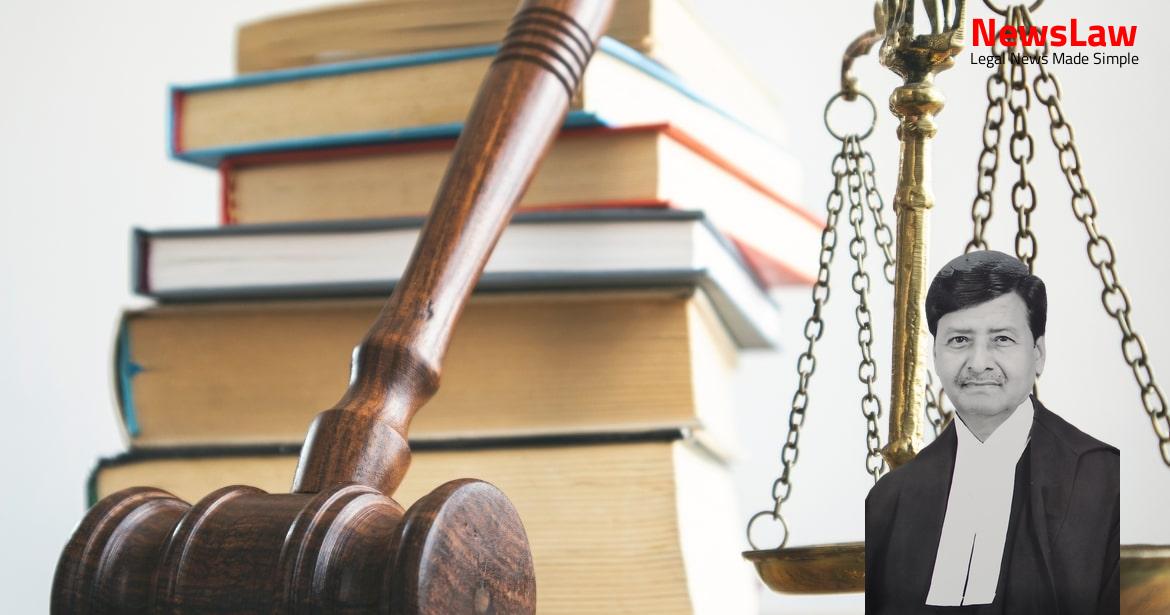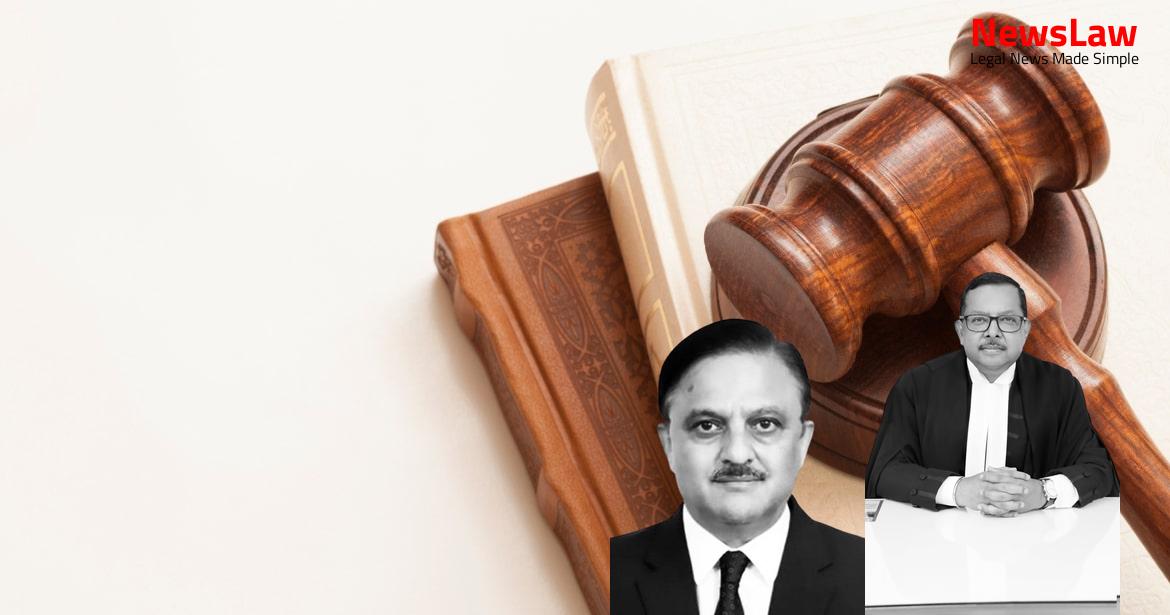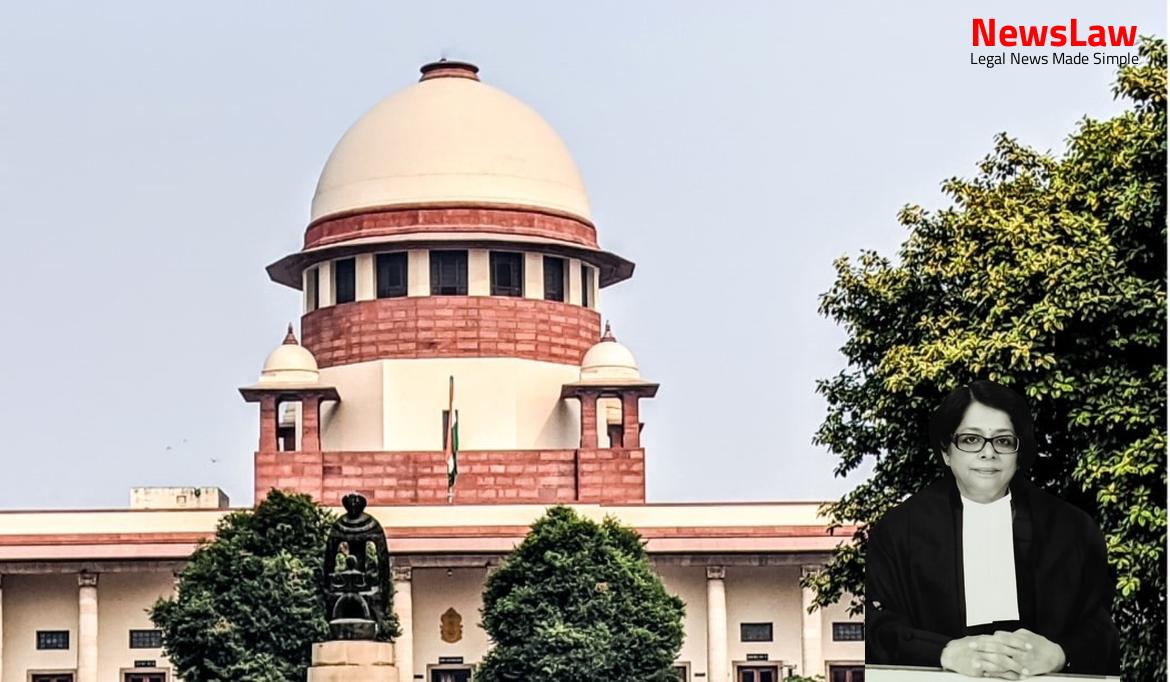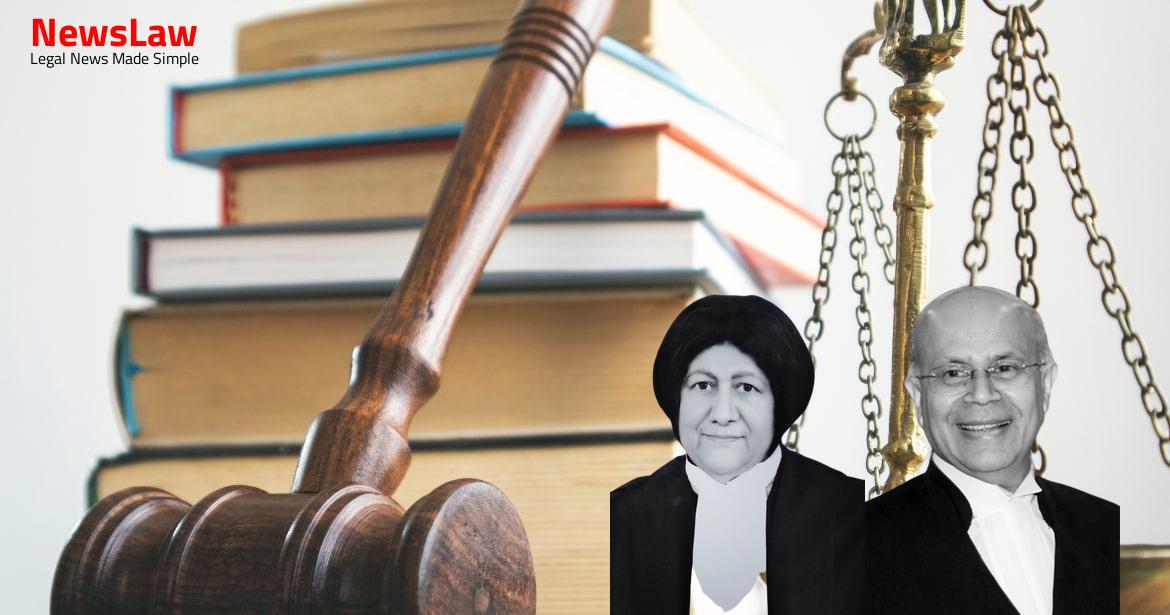Delve into the intricate legal analysis undertaken by the court in a significant case involving eyewitness testimony and charges of unlawful assembly. The court’s meticulous examination of the evidence presented, including the reliability of eyewitnesses and the principles guiding convictions in such cases, provides valuable insights into the judicial process and the complexities of establishing guilt beyond reasonable doubt.
Facts
- PW1 Sunil, along with other witnesses, recounted the incident of 08.03.2012 where individuals from Ganeshpura and Prehladpura, including Rajendra, Janak, Ramu, Dhara Singh, Satya Narayan, and others, entered Sunil’s house and physically assaulted Dhanpal and Sunil.
- The eyewitnesses mentioned specific details of the injuries inflicted on Dhanpal and the actions of each accused individual during the assault.
- Medical evidence presented by various witnesses highlighted the severity of the injuries sustained by the victims, ultimately resulting in Dhanpal’s death during treatment.
- The witnesses were cross-examined by multiple counsel representing the accused, emphasizing the account of events that occurred in the open space near the house.
- The involvement of each accused individual was detailed, including the weapons used and the specific actions taken during the assault.
- Jai Narain’s presence was corroborated during cross-examination
- Accused brought Jai Narain to the hospital after lifting him
- 13 accused filed criminal appeals in the High Court
- Rajendra and Janak were affirmed of conviction, others acquitted
- Sentences included rigorous imprisonment, fines, and duration adjustments
- Prosecution’s eyewitness evidence found trustworthy
- Accused’s argument regarding witness Narain rejected
- Trial Court convicted all 13 accused of various charges
- High Court discussed the issue of over implication and false implication of accused
Also Read: Electoral Malpractices in Mayor Election
Arguments
- The recovery of weapons after their disclosure does not automatically connect the accused without proof of injury assignment to them.
- Dr. Manish Singhvi, learned Senior Advocate and Additional Advocate General represented the State.
- Ms. Archana Pathak Dave, learned Advocate, represented the Complainant.
- Mr. Aditya Kumar Choudhary, Mr. Rajesh Singh Chauhan, and Mr. Randhir Kumar Ojha, learned Advocates, represented the accused-respondents.
- The appellants argued that the eyewitness account clearly identified the overt acts committed by all accused and disagreed with the High Court’s acquittal of 11 accused-respondents.
- The appellants criticized the High Court for not providing sufficient reasons for acquitting the 11 accused-respondents and requested the order of acquittal be set aside.
- The defense argued that a previous incident indicated an inter-se rivalry and motive for over-implicating the accused, which the High Court rightfully considered in the acquittal.
- Despite attempts to discredit prosecution witnesses, their credibility was upheld as they had no inconsistencies in their accounts and actively assisted the victims after the incident.
- One prosecution witness was disregarded due to lack of mention by another witness, leaving a total of 5 credible eyewitnesses who testified against the accused.
- The case referred to a previous judgment where the High Court’s approach of convicting only those accused with consistent witness testimonies was discussed.
Also Read: Balancing Power and Transparency: Electoral Bonds Struck Down, Disclosure Mandated
Analysis
- The court did not accept the argument of the appellant Janak Singh regarding the nature of the deceased’s injury due to specific allegations.
- The recovery of weapons at the appellant’s disclosure was corroborated by eyewitness statements, supporting the case against him for unlawful assembly and common object participation.
- The prosecution did not prove the case of conviction using Section 149 IPC against certain accused due to lack of specific allegations of causing injury with weapons.
- In cases of unlawful assembly where some are armed and others are not, all with a common object are liable for acts committed by the armed group.
- Previous enmity between the groups indicated potential for over-implication, as seen in the fact that not all accused were charged after investigation.
- The High Court’s approach of discounting the evidence of all eyewitnesses for acquitted accused was against established principles of law.
- The existence of a common object establishes liability for those who may not commit the offense but were part of the assembly guided by the common object.
- The court emphasized the need for specific allegations and overt acts for conviction under Section 149 IPC.
- The court found the High Court’s acquittal order to be manifestly erroneous and perverse based on clear and consistent eyewitness testimony.
- The motive of the accused to cause the occurrence was established, indicating a shared common object among the group involved.
- The prosecution’s failure to file charges or move applications against certain accused despite specific allegations raised questions about over-implication and selective prosecution.
- Five dead bodies were set on fire in a field.
- Out of 35 accused, 10 were given death sentences, and the rest were part of an unlawful assembly.
- Witnesses gave similar accounts of the incident and identified members of the unlawful assembly.
- The Masalti case established the principle that testimony of a single witness is sufficient for conviction.
- Liability of unlawful assembly members depends on the evidence on record.
- The decision in Masalti has been consistently followed by the Court.
- Presence as members of the unlawful assembly can determine liability, even without specific allegations of overt acts.
- Corroboration of participation in the unlawful assembly by more than one witness may be required.
- Witnesses Madanpal, Prakash alias Kalu, Roopsingh, and Tulsiram were identified.
- Principle from Masalti case questioned in the context of the attack described.
- Laxmi Prasad and armed companions attacked the house of Gayadin.
- High Court confirmed death sentences for some accused and acquitted others based on doubt.
- Accused A1, A6, A7, A8, A10 and A13 were attributed overt acts by multiple witnesses, including PWs 1, 27, and at least one more witness.
- Rest of the accused had roles attributed by PWs 1 and 27 without additional eyewitnesses, except for PW6 mentioning their roles.
- The proposed criteria for assurance considers attribution of overt acts by eyewitnesses other than PWs 1, 27, and PW6 to establish the accused’s role beyond doubt.
- The principle in Masalti applies where only presence is attributed without overt acts.
- This criteria was adopted in the appeals against acquittal to rule out over-implication and ensure a fair assessment.
Also Read: Recall of Resolution Plan Approval: Legal Analysis
Decision
- The appeals have been allowed against accused A1, A6, A7, A8, A10, and A13.
- The rest of the accused are given the benefit of the doubt and their acquittal by the High Court is confirmed.
- The order of conviction and sentence against A1, A6, A7, A8, A10, and A13 by the Trial Court is restored.
- The appeals are partly allowed as indicated above.
Case Title: THE STATE OF RAJASTHAN Vs. BABLU @ OM PRAKASH (2021 INSC 782)
Case Number: Crl.A. No.-001475-001475 / 2021



